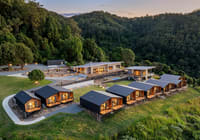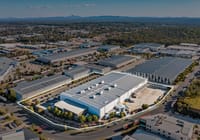
Kilter Rural puts Oomabah Riverina site up for sale with $60m hopes
Kilter Rural has put a 7210-hectare cropping and grazing asset in the Southern Riverina region of NSW up for sale with a $60 million price tag as the asset manager half-owned by Regal Funds Management takes the latest step to wind down a fund owning the asset.
The $100 million Kilter Agricultural Fund, which earlier this month said it had sold two-thirds of its 1858-hectare portfolio in Victoria’s Goulburn Valley, is now selling the five-property Oomabah Aggregation, an asset it assembled in a year-long process as a development opportunity.

“A variety of factors led us to consider it was a good value creation opportunity,” Kilter Rural chief investment officer Euan Friday told The Australian Financial Review.
“We felt it would respond to management practices focused on building soil function and putting together an aggregation of this scale. It’s something not often achievable.”
The aggregation includes 484 hectares of irrigated cropping land, 5086 hectares of dryland cropping and 142 hectares of grazing.
“The performance of the annual cropping sector has been very strong in recent years, notwithstanding some dry conditions in southeastern Australia over the last 12 months,” he said.
“It’s quite stark and striking. The outlook remains pretty positive.”
The property would also benefit from the investment of more water infrastructure, said Colliers director Duncan McCulloch, who is marketing the property with colleagues Rawdon Briggs, Connor Dixon and Matthew Tolmachoff.
“Its strategic location relative to the Murray River and Murray Irrigation Limited combined with favourable climatic conditions offers significant potential for further irrigation development,” McCulloch said.
The strength of annual crops – such as corn, rice and wheat – contrasted with weaker permanent farmland crops such as orchards and vineyards in the latest Australian Farmland Index figures, which posted a total return of -2.1 per cent over the March quarter.
“Despite continued support from positive annual crop performance, the overhang of a challenging period for permanent crops again continues to temper results in the sector,” a report accompanying the figures from Asian Association for Investors in Non-Listed Real Estate Vehicles said.
The index, reflecting the income return and capital growth of 63 different farmland properties – 44 per cent of which were permanent crops and 56 per cent of which were annual cropping and livestock assets – shows how the gloss has come off the previously booming sector in recent years.
While it reflects a 4.3 per cent annualised return over the past five years, the last three years show a different story, with a total annualised return of -0.3 per cent, reflecting an income return of 0.7 per cent and a decline in capital values of 1 per cent, as borrowing costs and input costs have added to difficulties such as low rainfall.
Prices near bottom
While cattle, sheep and dairy prices had been strong, the outlook for grain prices was unclear due to global trade concerns and water storage levels had dropped below long-term averages, the report said.
But the sector was unlikely to fall further, the report said.
“The drag from permanent crop returns after the challenging seasonal conditions from 2021 through 2024 continues to distort the index,” it said.
“Index participants suggest that a more positive start to the 2025 season and improved pricing likely means the current capital values are close to the bottom for Australian permanent crop valuations.”
Michael Blakeney of Riparian Capital Partners, one of the businesses providing data for the index, said key commodity prices were “generally” positive.
“The southern winter season remains a work in progress, with upward pressure on water prices as permanent crop demand increases and a dry autumn extends,” Blakeney said.
The Oomabah Aggregation, just three hours’ drive from Melbourne, was well-placed to tap the growing demand for food and fibre, and was cheaper than many of the large farmland assets to the north in NSW, Kilter Rural’s Friday said.
“We identified that land in this particular part of NSW we felt was undervalued on a productive capacity basis in terms of dollars per hectare,” he said.
“You only have to go 20-30 kilometres in any direction and you’d find the prices would be 20-30 per cent higher.”











